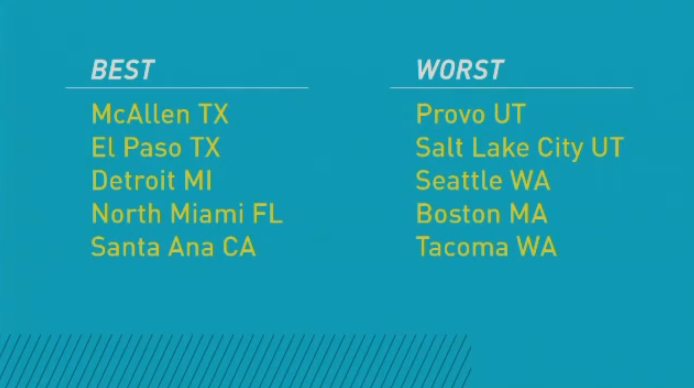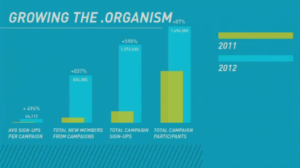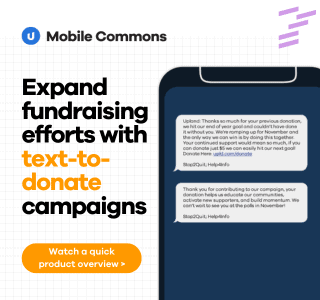How do you use your organization’s data to reach more members? Much ink has been spilled about how data mining can transform your organization’s outreach. But it can be confusing, on a practical level, to figure out where to even start to mine.
Fortunately, the data wizards at DoSomething.org are here to help. Do Something has dedicated itself to connecting with teens using the medium they love most – text messaging. Because every text they send or receive is tracked by the Upland Mobile Messaging platform, Do Something has been able to apply extensive data analysis to their program.
They’ve used the insights they’ve unearthed to increase signups on each campaign by almost 500% and to bring in 837% more new members. The organization recently reached its millionth mobile member.
In a presentation entitled “The Dot Organism: Creating a Culture of Testing,” data scientists Jeff Bladt and Bob Filbin walk through their deceptively simple 4-step process for turning raw data into unadulterated results.
Check out the highlights from the presentation below.
Do Something’s Data Mining Process
- Monitor the Data: Do Something’s first step for data analysis is to monitor the data that’s coming in. As the presentation notes, a mobile campaign provides a wealth of information about your users. When someone texts in their phone number, you essentially know their location. When they tell you their first name, you’ve got a good guess at their gender. First, gather the data that’s available to you. Then you can start to seek out patterns.
- Detect Patterns: Once they’ve isolated their data, Do Something looks for patterns. For example, Do Something noted that certain cities have far greater user retention than others. They had the greatest user retention in McCallen, Texas, and the most user drop-off in Provo, Utah – and the difference was significant. Do Something started to see that their retention rates were much better in cities with more diverse populations that skewed towards lower incomes. Wealthier, more homogeneous metropolitan areas had higher drop-off rates.
- Test Campaigns: Knowing their different user groups allowed Do Something to test which campaigns performed better with different sorts of users. The data analysts saw that campaigns that focused on the family and on individual health did better among the minority populations of cities like McCallen. People in Provo preferred campaigns that looked outwards towards the community – for example, a campaign to help the environment.
- Prescribe: Once you know what sorts of users prefer what types of campaigns, you can start to design initiatives that resonate with their intended audiences. For example, Do Something designed a campaign that combined dancing and diabetes, to connect with the minority users who felt passionately about family health issues.

Results
The results speak for themselves. Do Something increased signups for each individual campaign by almost 500%; they increased the total number of signups almost 600%; and they increased the percentage of new members from campaigns by 837%.

The process feeds on itself, too. Do Something data scientists can monitor the data from the prescribed campaigns, start to detect patterns, test more campaigns, and then prescribe even better ideas.
“With data,” Bladt says, “we no longer have to rely on intuition. We get constant feedback.”
Rigorous data analysis has helped DoSomething.org, an organization of about 40 people, to rally millions of members – and have a concrete impact on the broader world.
Watch the full presentation from DoSomething.org’s annual meeting below. (The data mining presentation starts at 19:30.) And if you’d like to discuss ways your organization can start to take advantage of the data that’s already at your fingertips, contact us.


